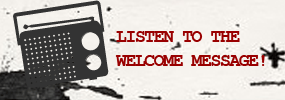Beef: How Milk, Meat and Muscle Shaped the World by Andrew Rimas and Evan D.G. Fraser. Mainstream Publishing. 250 pp. £12.99.
“I am a great eater of beef,” pleads Sir Andrew Aguecheek in William Shakespeare’s Twelfth Night, “and I believe that does harm to my wit.” Wit isn’t the only thing harmed by the consumption of beef and other meats and dairy products. But you wouldn’t know it from reading Beef: How Milk, Meat and Muscle Shaped the World by Andrew Rimas and Evan D.G. Fraser. Like skimming off the unwanted fat from the surface of simmering beef stock, the authors discard what they don’t want to spoil the taste of their tale of how beef built civilisation. A more appropriate title for a less romantic book may have been Beef: How Fat and Flatulence Put at Risk Our Health and the Planet. But, I suspect, this Beef is targeted for an audience of readers who wish to continue savouring the social and cultural delights of meat without wanting to spend too much time thinking about the political and environmental consequences. Reality forces the authors to talk seriously at the end but this diversionary discursion from the pro-meat perspective left this reader with a bitter after taste as too little too late. No doubt, our intimate relationship with the animals, including those we eat, plays a significant role in shaping the world we live in. The question is how we chose to see and write about it as well as where do we go from here. Whose story are we telling, anyway? As the authors unwittingly ask, “Imagine our world without cattle, and you’re not imagining our world. Cattle, second only to the ingenuity of humanity itself, built this astounding complexity of fields and cities, letters and money, banks and kings. And, indeed, of gods.” (p.33)
The authors, a freelance journalist with extensive international travel now based in Boston and a lecturer on farming and the environment at the University of Leeds in England, tell the “story of cattle and of the people who made them what they are.” (p.23). Beef is a collection of creative non-fiction essays arranged in the linear narrative theme of humanity and its development over the ages. So, we start with “From Horn to Hoof” (prehistory to 8000 BC) and end on “The $300 Sirloin” (twentieth and twenty-first centuries). The authors skip anecdotally through the millennia from pre-historic times in Africa and nomadic tribes and their herds of cattle to contemporary Japan and Wagyu raw meat at $300 per pound.
This should’ve been a road less travelled as with the passing of each chapter there is a growing sense that what we’re reading is an arbitrary collection of a bit of this and a bit of that. Functioning as some overarching theme connecting us with the dawn of civilisation (read: real men killing cows) and the unknown fate of our futures (the consumer’s choice: “walk the meat aisle with an eye for qualities like provenance, ecological impact and sustainability, or look to canned beans” [p.220]), the authors weave in and out of their narrative account visits to Africa and the Masai. They end up at Nairobi’s Carnivore Restaurant.
We chewed for an hour, commenting solely on the food. Chicken livers, ostrich balls, Chinese spare ribs and roasts of every barnyard denizen except for the cat. A waiter carved a beef rump at swordpoint, about half an inch thick. Then came lamb. And sausage. And turkey. And more beef. No storied gluttons – not Lucullus, not Henry VIII, not even Elvis – had ever swamped themselves with so many pounds of flesh. We ate our way past satiety and into hazy tracts of stupor. (p.187)
No sooner do the authors put down their knives and forks after this celebration of unrestrained excess, they wag their fingers and call upon consumers to “learn restraint” in their consumption of meat but even this is problematic. (p. 203)
Restraint has been the mantra of environmentalists since the dying days of the passenger pigeon, but the most effective tool for forcing consumers to rethink their habits is to raise prices. With lower beef production, this will happen anyway. The real question is how to remodel the industry itself so that it’s profitable, sustainable and capable of filling the millions of hamburger buns left vacant by the shuttered feedlots. (p.203)
Vegetarianism, not even a “meat-free” diet of part-time vegetarianism, is a serious consideration fort these authors. They reveal their bias with such ill-informed observations as these.
To be meaty means to possess merit and conviction. To be vegetal means to be practically dead. (p. 15)
Spartan in simplicity, yes, but the result should debauch the staunchest vegan. [referring to a recipe for rib-eye steak] (p. 18).
Beef is like one of those cheap but attractive cookbooks that dare you to impulse buy them at the local supermarket checkout. You just know, however, when you get home there won’t be a recipe worth trying. Indeed, Beef does include recipes, well, what are called “Culinary Interludes.” But who’s going to want them in the age of cancer and heart disease, saturated fat and E. coli outbreaks, factory farming and mad cow disease and water wars and global warming?
Suggested alternative titles to consider include
Meat by Nick Fiddes
Meat Market by Erik Marcus
The Meat You Eat by Ken Midriff
Beyond Beef by Jeremy Rifkin
Beef and Liberty by Ben Rogers
Fast Food Nation by Eric Schlosser
Livestock’s Long Shadow: Environmental Issues and Options by Henning Steinfield
Cow by Hannah Velten


